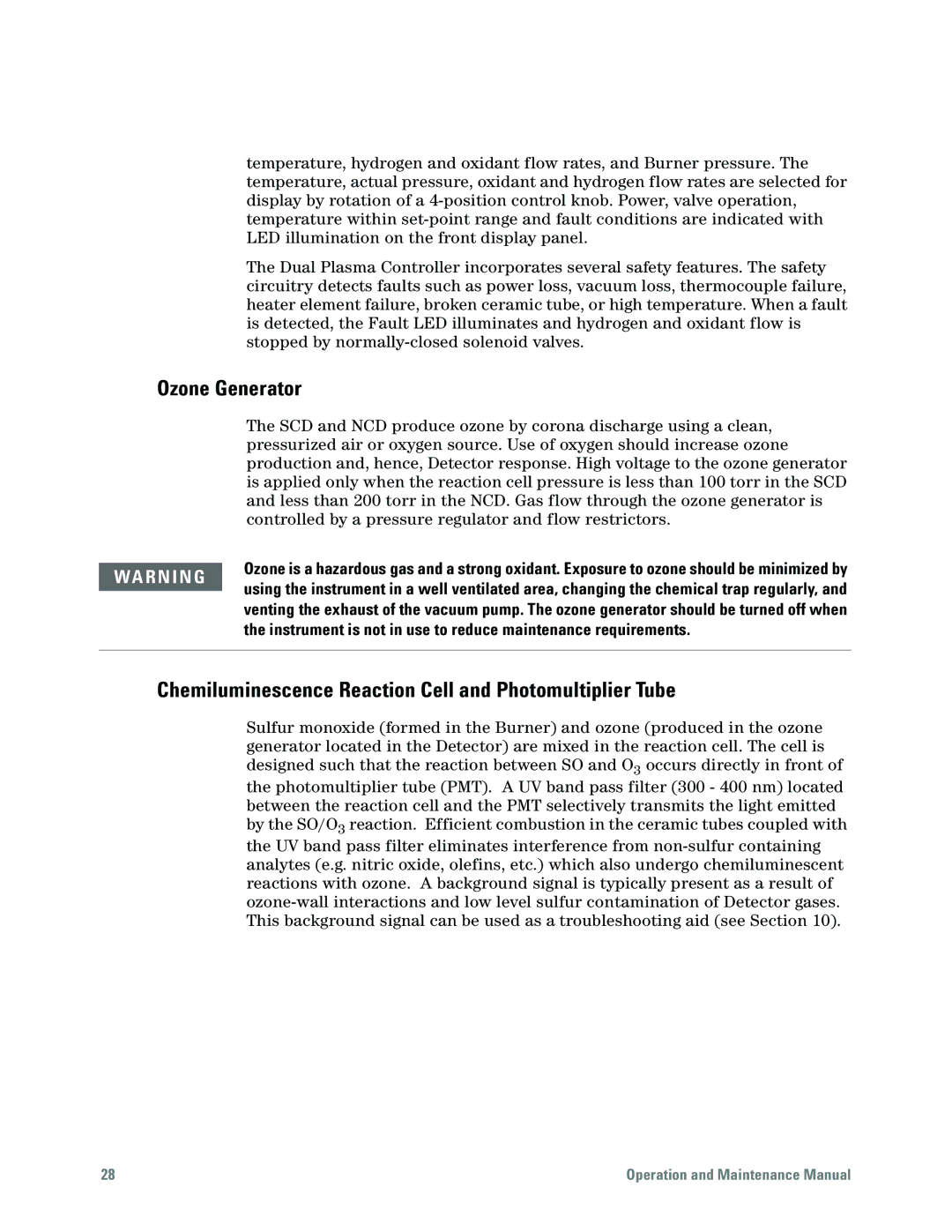temperature, hydrogen and oxidant flow rates, and Burner pressure. The temperature, actual pressure, oxidant and hydrogen flow rates are selected for display by rotation of a
The Dual Plasma Controller incorporates several safety features. The safety circuitry detects faults such as power loss, vacuum loss, thermocouple failure, heater element failure, broken ceramic tube, or high temperature. When a fault is detected, the Fault LED illuminates and hydrogen and oxidant flow is stopped by
Ozone Generator
The SCD and NCD produce ozone by corona discharge using a clean, pressurized air or oxygen source. Use of oxygen should increase ozone production and, hence, Detector response. High voltage to the ozone generator is applied only when the reaction cell pressure is less than 100 torr in the SCD and less than 200 torr in the NCD. Gas flow through the ozone generator is controlled by a pressure regulator and flow restrictors.
WA R N I N G | Ozone is a hazardous gas and a strong oxidant. Exposure to ozone should be minimized by | |
using the instrument in a well ventilated area, changing the chemical trap regularly, and | ||
| ||
| venting the exhaust of the vacuum pump. The ozone generator should be turned off when | |
| the instrument is not in use to reduce maintenance requirements. | |
|
|
Chemiluminescence Reaction Cell and Photomultiplier Tube
Sulfur monoxide (formed in the Burner) and ozone (produced in the ozone generator located in the Detector) are mixed in the reaction cell. The cell is designed such that the reaction between SO and O3 occurs directly in front of the photomultiplier tube (PMT). A UV band pass filter (300 - 400 nm) located between the reaction cell and the PMT selectively transmits the light emitted by the SO/O3 reaction. Efficient combustion in the ceramic tubes coupled with the UV band pass filter eliminates interference from
28 | Operation and Maintenance Manual |
